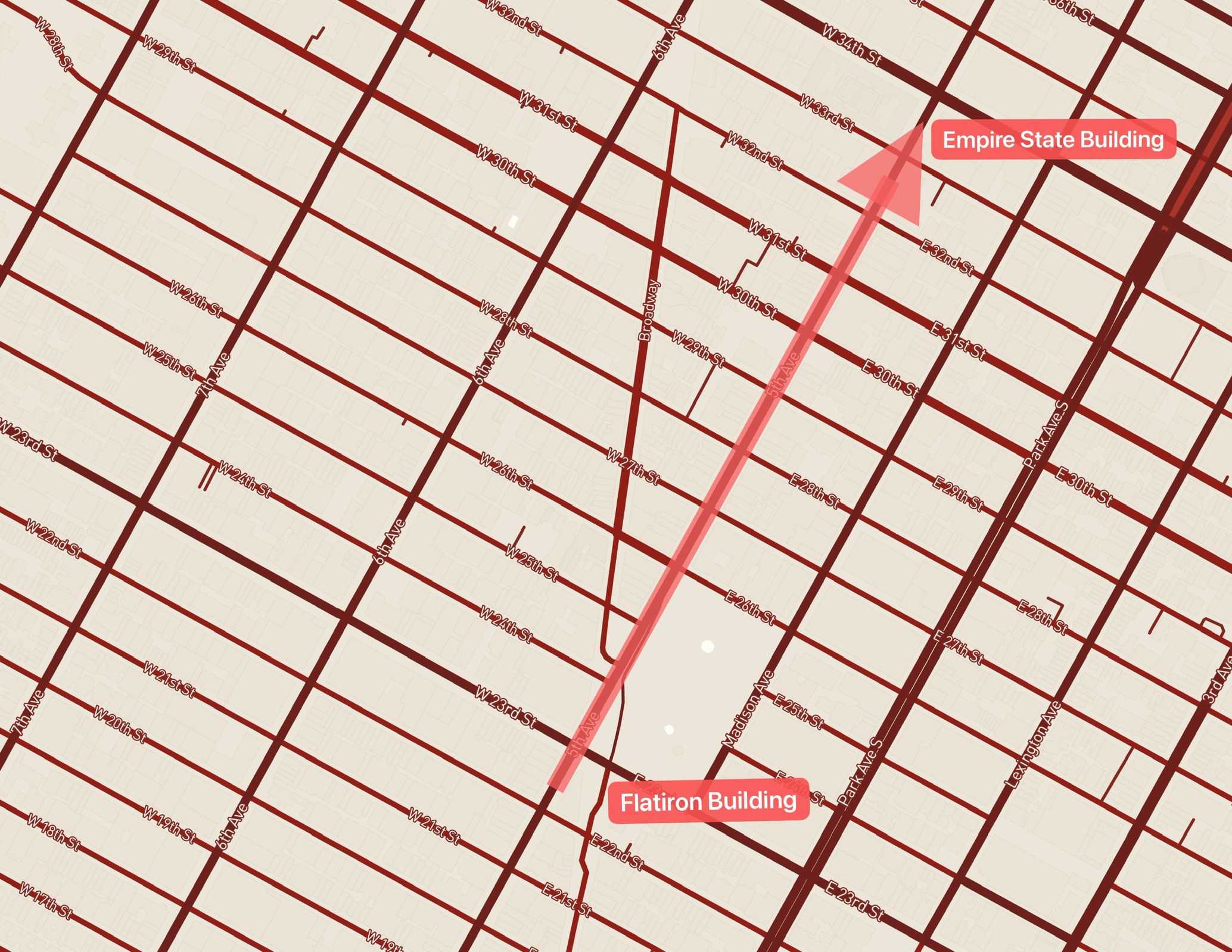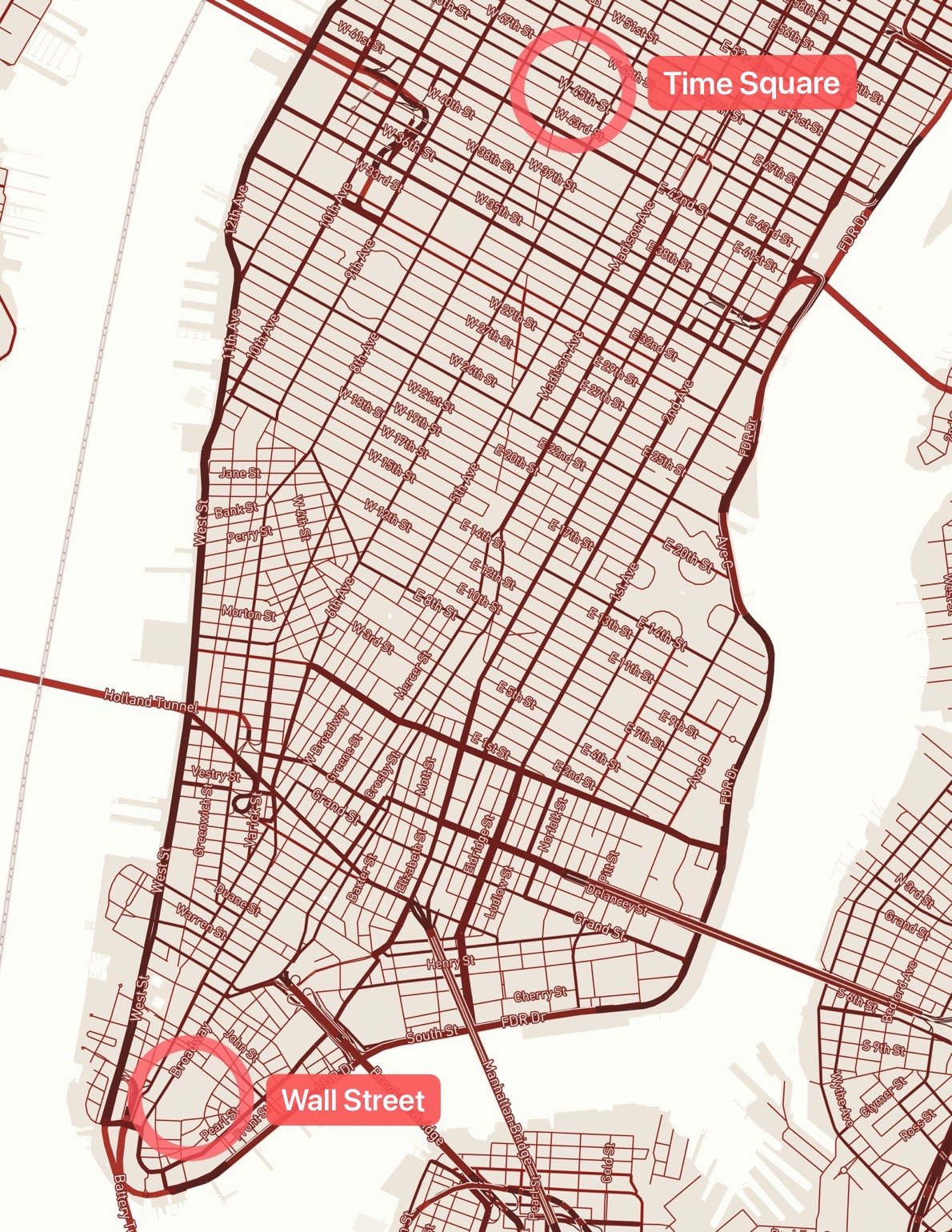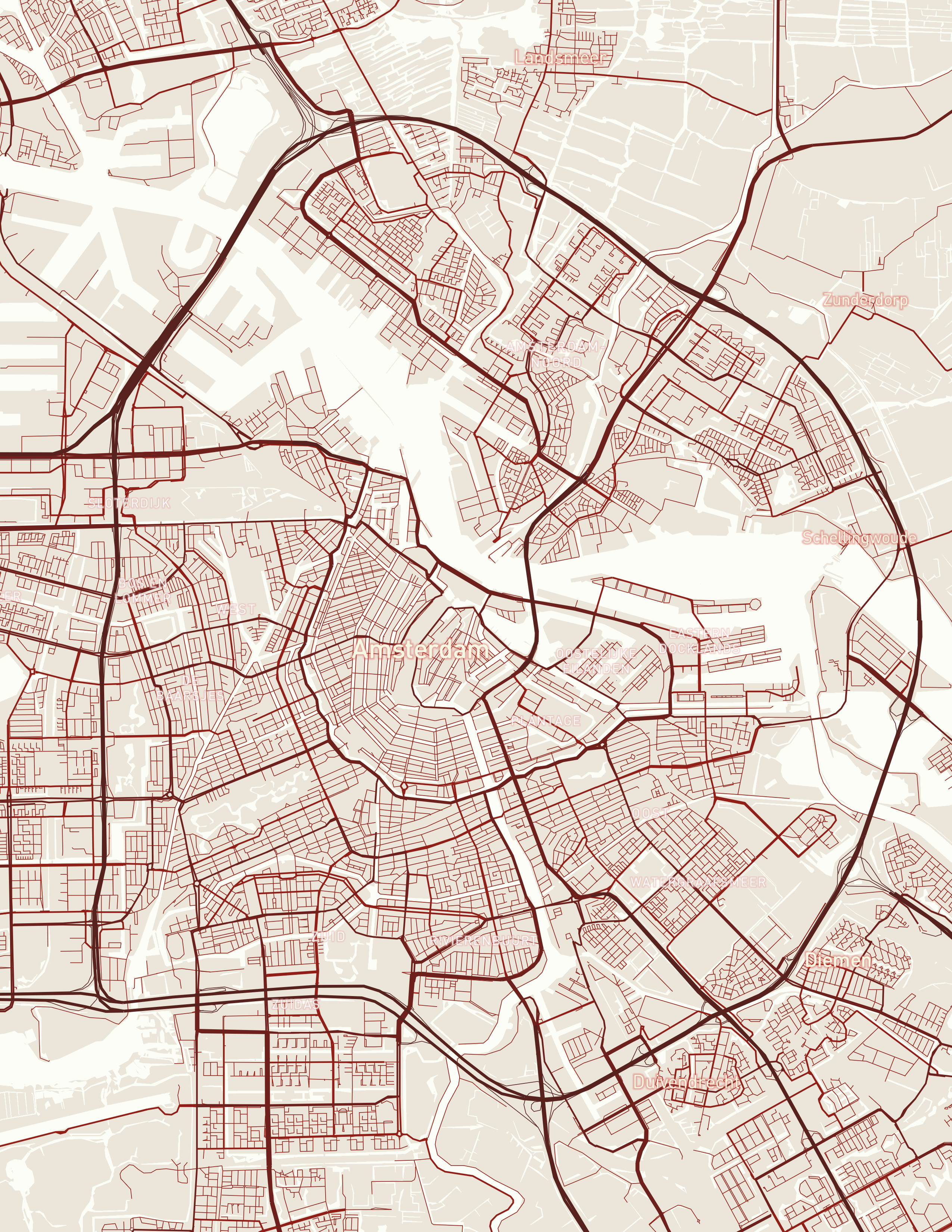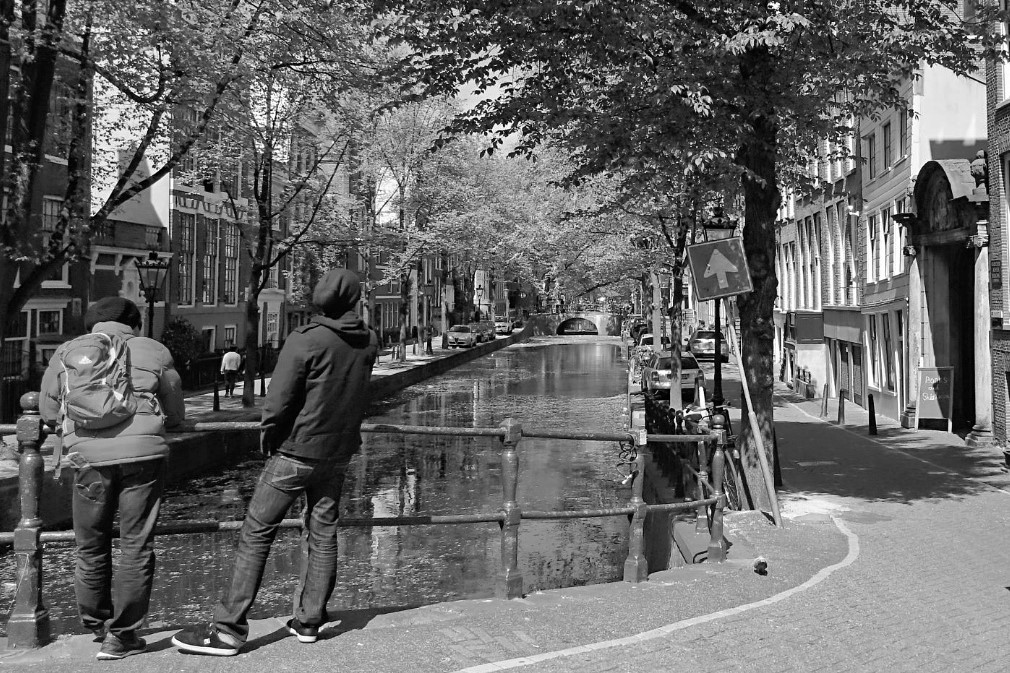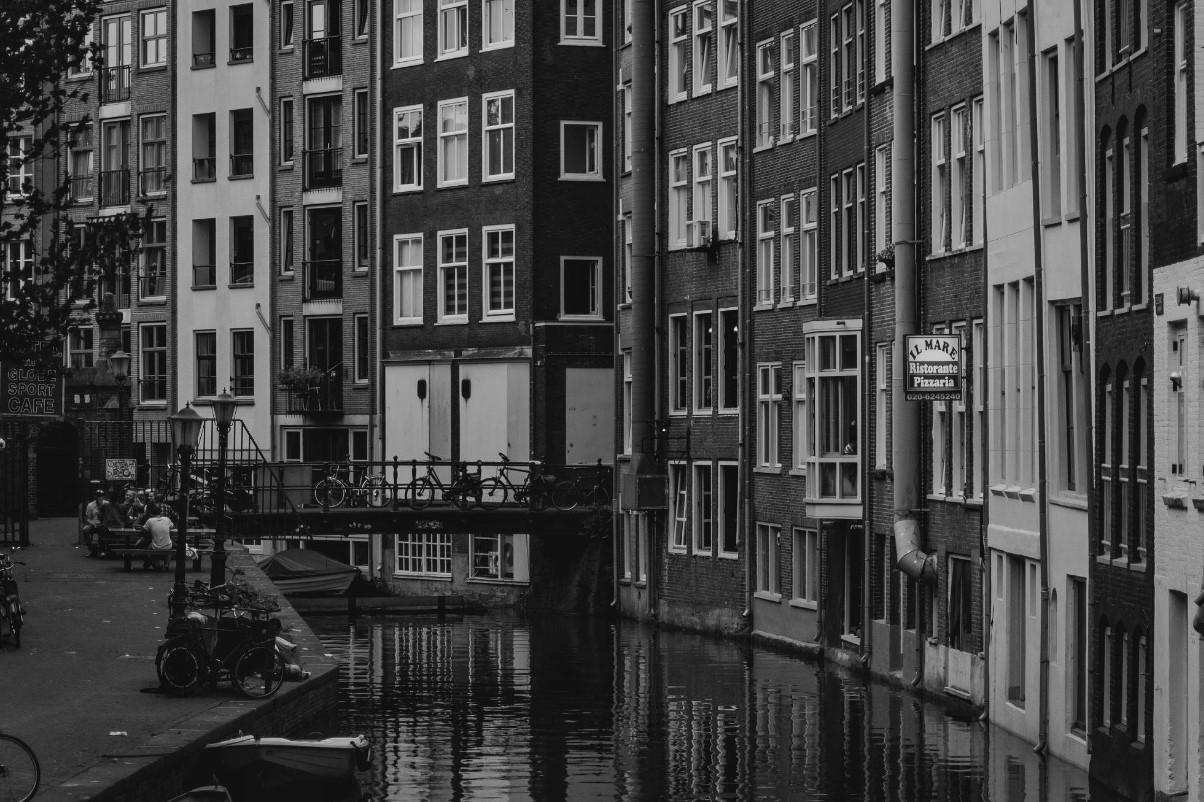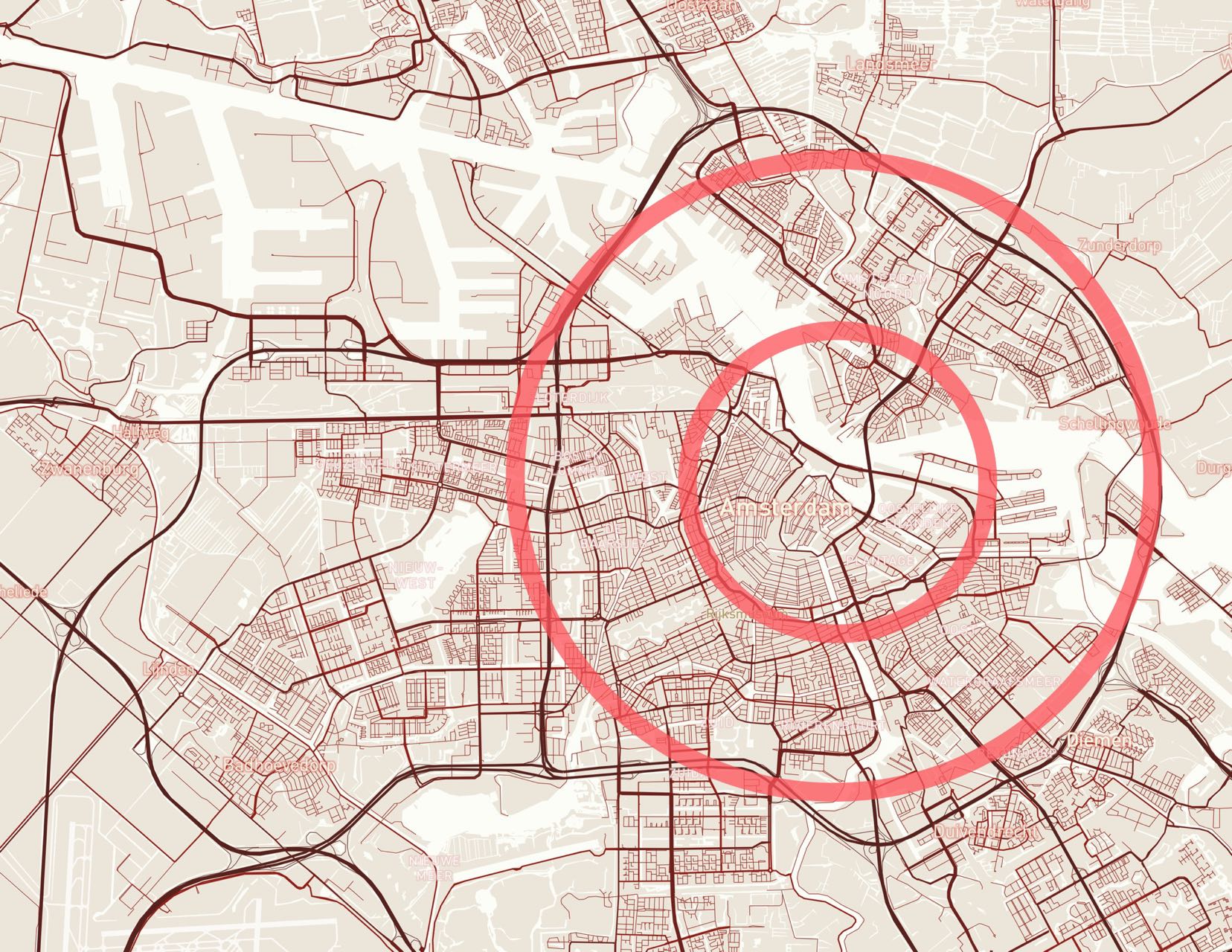City Texture in Manhattan Island and Amsterdam
Many people are fascinated by the texture of a city: the highways, rails, streets and avenues are woven to build a huge network. This network is the lifeblood of the city, and it transports people and stories through the history.

Different cities have different styles in the road network planning. The first map from the left shows roads in Beijing, China. The roads are concentric and right-angled. In the middle is the roads in Moscow, Russia. Concentric and circular. The last map shows roads in Mumbai, India. The roads develop organically along the coast.
This difference in the city's texture can be very interesting: why the roads look like what they are?
Maybe New York County in the U.S, and Amsterdam in Netherlands can be compared, and hopefully figure out why the road networks look as they are.
New York County on Manhattan Island has area of 87.0 km2. The most distinctive feature on Manhattan Island is the grid system that was planned in 1811. This grid system described the earliest look of the roads on Manhattan Island: Avenues are parallel to the shorelines; streets are perpendicular to the avenues. The avenues tilt to the northeast, with a deviation from true north to 29 degrees.

"The Grid defines a new balance between control and de-control in which the city can be at the same time ordered and fluid, a metropolis of rigid chaos."
—— Rem Koolhaas, 1978
This is how roads look like in New York City. Streets and avenues are too long to see the end. The city is segmented by skyscrapers. And skyscrappers are surrounded by cars, buses, and trains.
There are three reasons why roads on Manhattan Island looks like a grid:
• This right-angeled road network aligns well with this narrow, rectangular shape of the island. People would feel easy to navigate through the city.
• The distances between blocks are roughly the same, which allow pedestrains to calculate travel time with simple rules of thumb: twenty blocks to a mile, one block a minute.
• Places are connected by straight roads, which saves time and money to build.





